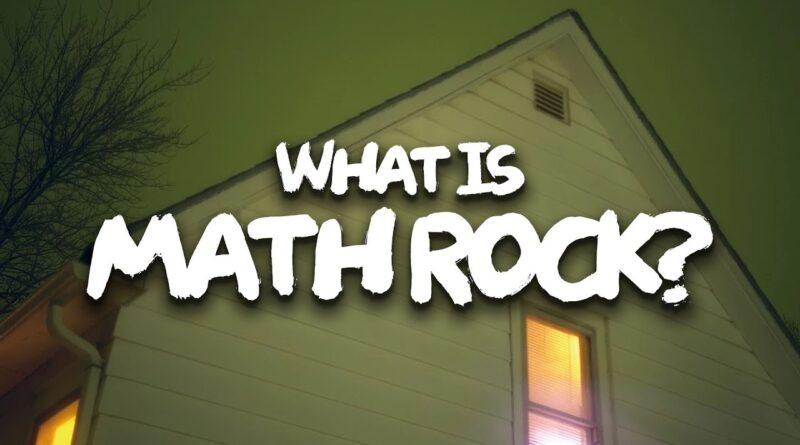What Is Math Rock? A Deep Dive into the Genre
Math rock is a unique and intricate subgenre of rock music known for its complex rhythms, unusual time signatures, and technical precision. Emerging in the late 1980s and gaining prominence throughout the 1990s and 2000s, math rock has captivated musicians and listeners who appreciate experimental and unconventional approaches to rock music.
Origins of Math Rock: Where It All Began
To understand what is math rock, we must first explore its roots. The genre evolved from progressive rock, punk, and post-hardcore, blending intricate guitar work with asymmetrical rhythms. Early pioneers of math rock include bands like Slint, Don Caballero, and Shellac, who pushed the boundaries of traditional rock music with complex structures and innovative instrumentation.

Influences from Progressive Rock
Math rock owes much of its complexity to progressive rock bands of the 1970s, such as King Crimson, Rush, and Genesis. These groups experimented with odd time signatures and intricate compositions, laying the groundwork for math rock’s technical prowess.
The Impact of Punk and Post-Hardcore
While progressive rock influenced math rock’s complexity, punk and post-hardcore contributed the genre’s raw energy and unconventional song structures. Bands like Fugazi and Minutemen rejected mainstream formulas, instead opting for irregular tempos and unpredictable rhythms, which became hallmarks of math rock.
Characteristics of Math Rock
Complex Time Signatures and Rhythms
One of the defining features of what is math rock is its use of non-standard time signatures. While most rock music follows a straightforward 4/4 time signature, math rock often employs odd meters like 5/4, 7/8, or even frequent time signature changes within a single song.
Technical Guitar Work
Math rock guitarists use intricate tapping, rapid arpeggios, and unconventional chord progressions to create a distinctive sound. The interplay between guitars and bass often forms polyrhythmic layers, making each track a complex yet engaging listening experience.
Dynamic Song Structures
Unlike mainstream rock, math rock rarely follows the typical verse-chorus-verse format. Instead, songs evolve organically, with sudden tempo shifts, stop-start dynamics, and unpredictable transitions.
Minimalist Vocals (or None at All)
Many math rock bands prioritize instrumental arrangements over vocals. When vocals are present, they often take a backseat, acting more as an additional texture than a dominant melody.
Notable Math Rock Bands
Several bands have shaped what is math rock, each bringing their own flavor to the genre:
- Slint – One of the earliest math rock bands, known for their atmospheric and dynamic compositions.
- Don Caballero – A highly influential instrumental band recognized for their complex drumming and guitar work.
- Battles – A modern math rock band blending electronic elements with intricate rock structures.
- Toe – A Japanese math rock band that emphasizes emotional depth with intricate instrumentation.
- American Football – Merges math rock with emo influences, producing melodic and heartfelt compositions.
Math Rock vs. Progressive Rock: What’s the Difference?
While both math rock and progressive rock emphasize technical skill and innovation, key differences set them apart:
| Feature | Math Rock | Progressive Rock |
|---|---|---|
| Time Signatures | Frequently odd and unpredictable | Often complex but structured |
| Song Structure | Irregular, experimental | Longer compositions, sometimes conceptual |
| Vocals | Often minimal or absent | More prominent and thematic |
| Influences | Punk, post-hardcore, indie rock | Classical music, jazz, psychedelic rock |
Math Rock in Modern Music
Though math rock remains a niche genre, its influence extends beyond dedicated math rock bands. Many indie and alternative rock artists incorporate math rock elements, such as irregular time signatures and intricate guitar work, into their music. Bands like Foals, TTNG (This Town Needs Guns), and Chon have helped introduce math rock to broader audiences.

Why Is Math Rock So Popular Among Musicians?
Math rock’s appeal lies in its technical challenge and artistic freedom. Musicians who enjoy pushing the limits of their skills are drawn to the genre’s complexity, while listeners who appreciate intricate compositions find math rock endlessly fascinating.
Conclusion: The Ever-Evolving World of Math Rock
So, what is math rock? It is a genre that thrives on complexity, unpredictability, and technical brilliance. From its origins in progressive rock and post-hardcore to its modern-day evolution, math rock continues to captivate musicians and listeners alike. Whether you’re a musician seeking inspiration or a music enthusiast looking for something outside the mainstream, math rock offers a rewarding and intellectually stimulating experience.
you may also like



